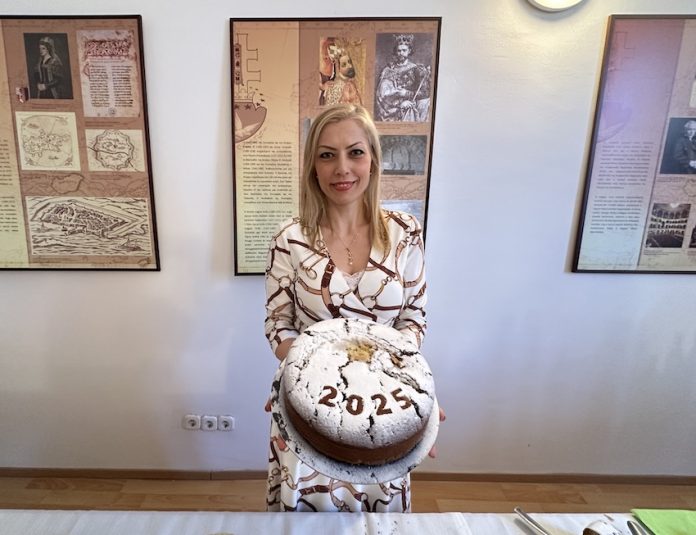Edited by Anna Popper

On 30 January 2025, hosted by the Embassy of the Republic of Cyprus in Budapest, a delightful and meaningful celebration was held honouring the ancient tradition of cutting the Vasilopita. This Greek and Cypriot New Year cake symbolizes hope, prosperity and blessings.
The event brought together distinguished guests, including representatives from the Ministry of Foreign Affairs, the Hungarian National Assembly, members of the diplomatic corps and the Cypriot community. Notable attendees included H.E. Emmanouil Apostolakis, Ambassador of the Hellenic Republic to Hungary, Ambassador Ivan Medveczky from the Ministry of EU Affairs of Hungary and the Chargé d’Affaires of the Embassy of Bosnia and Herzegovina in Budapest.
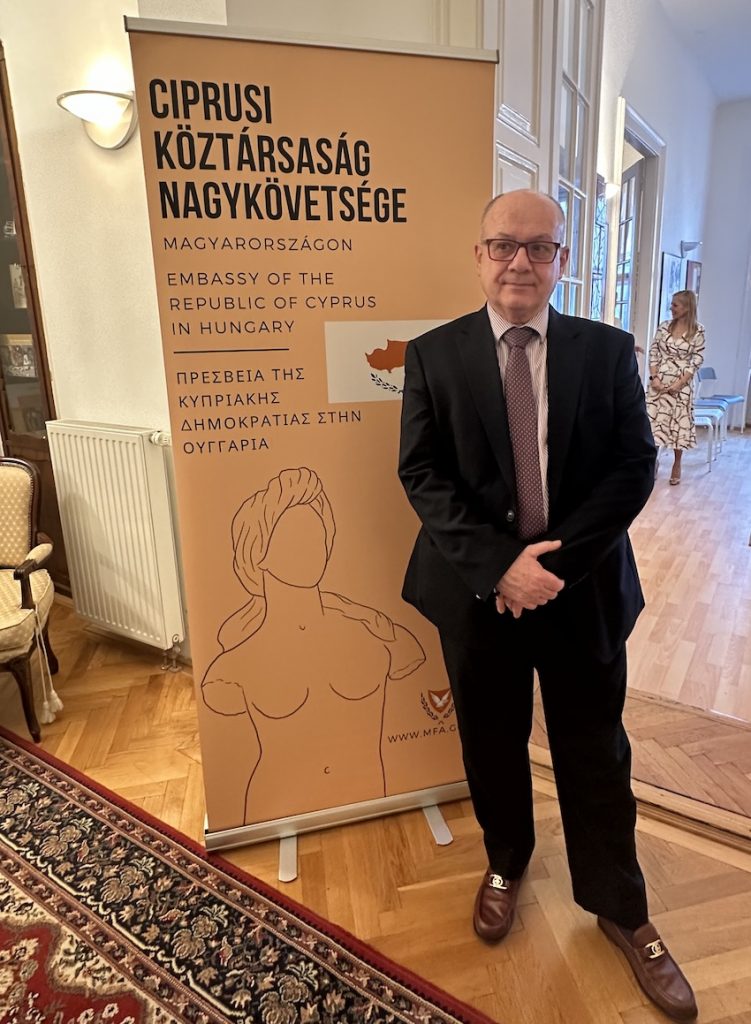
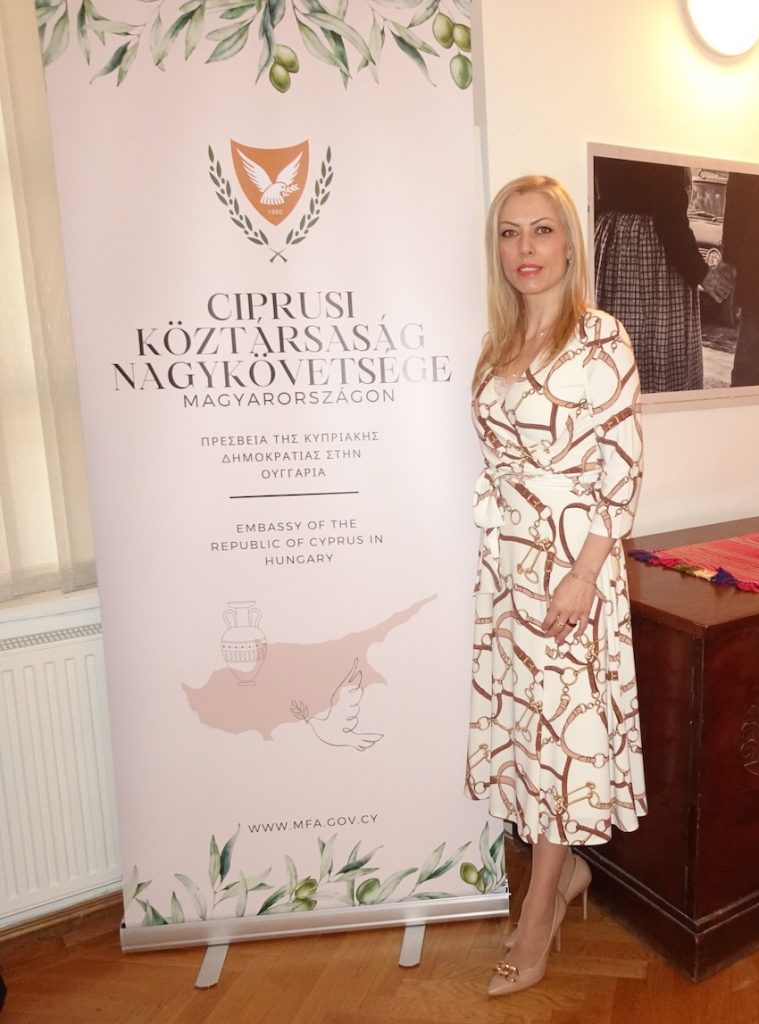
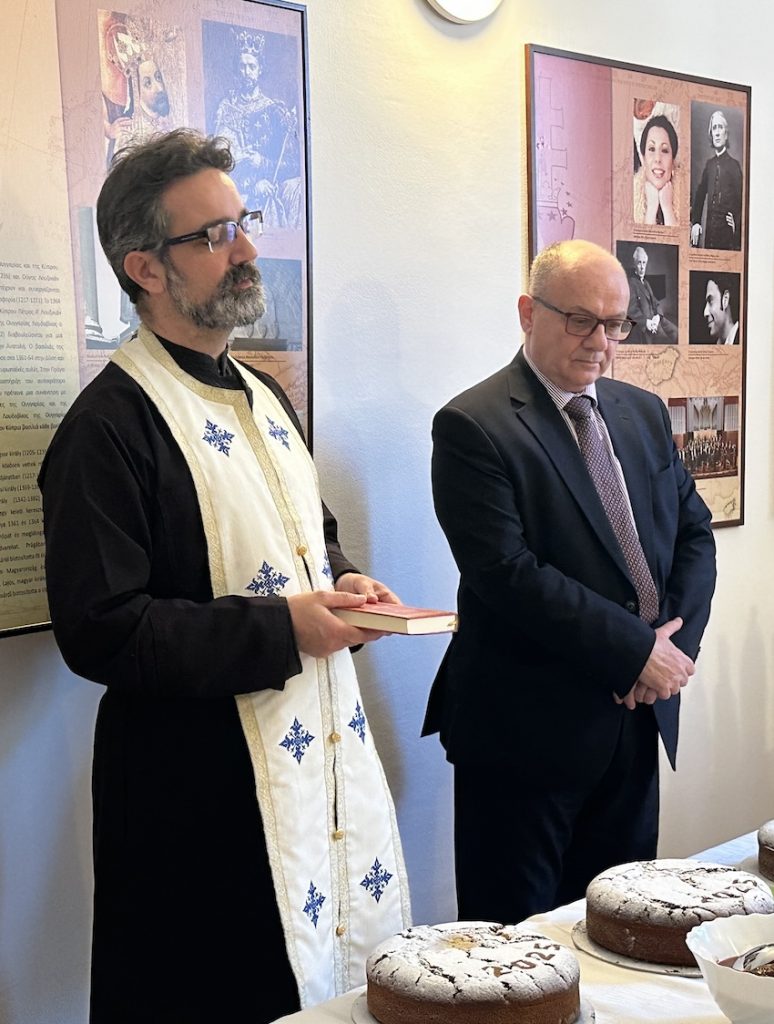
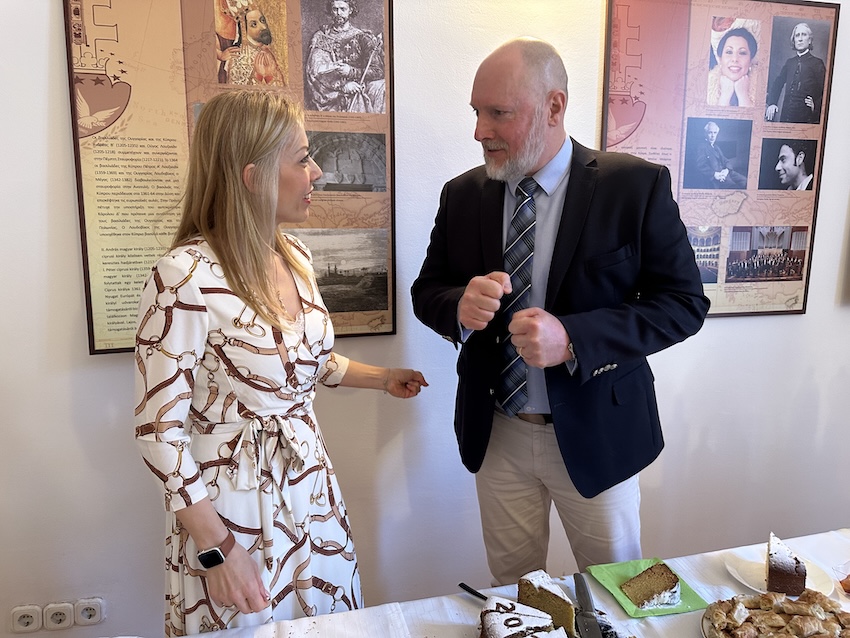

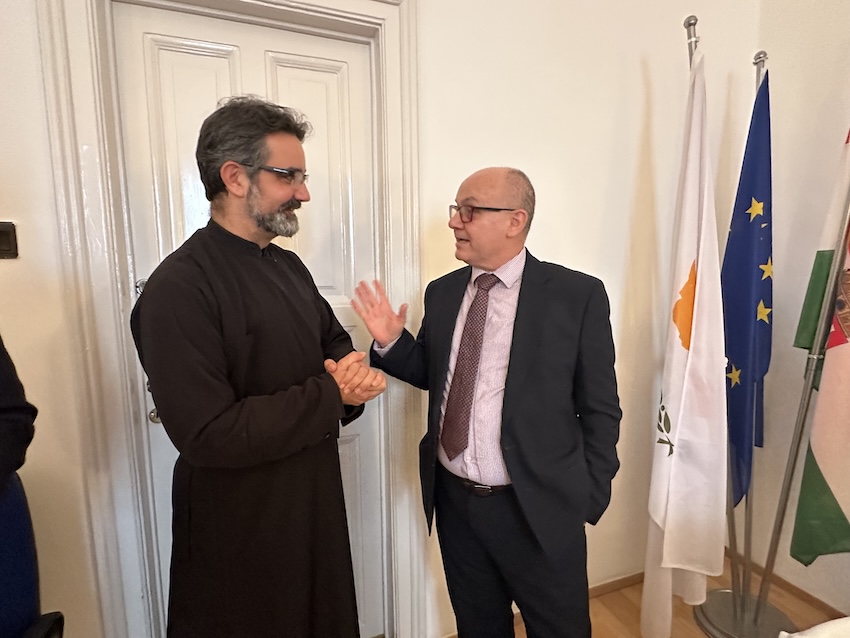

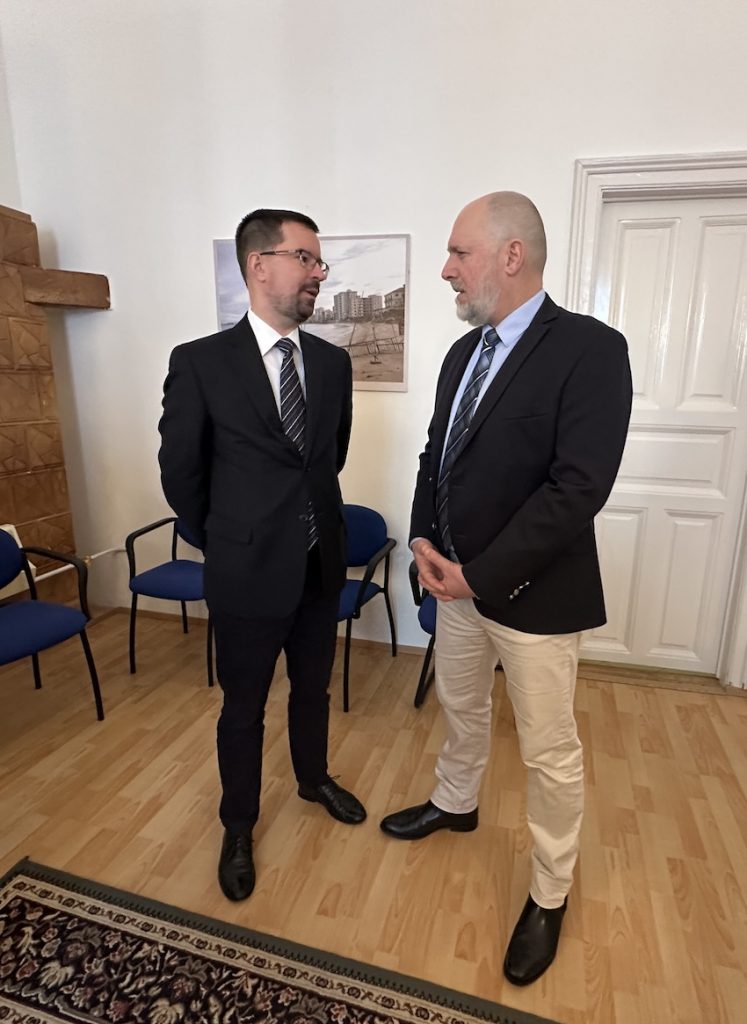
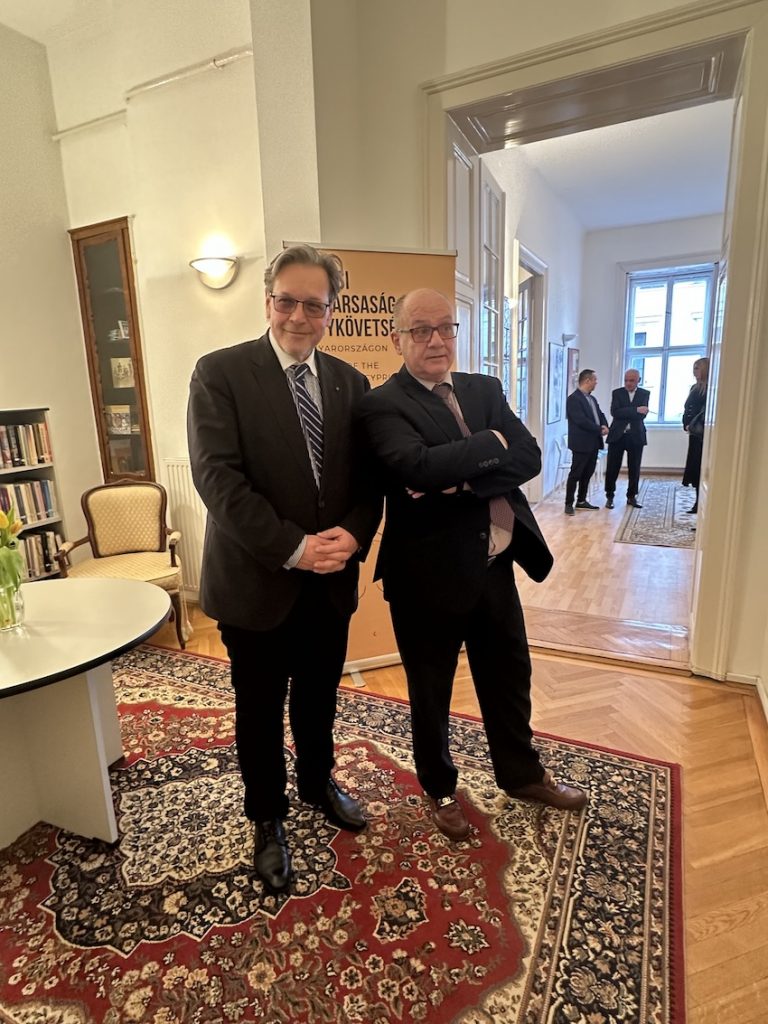

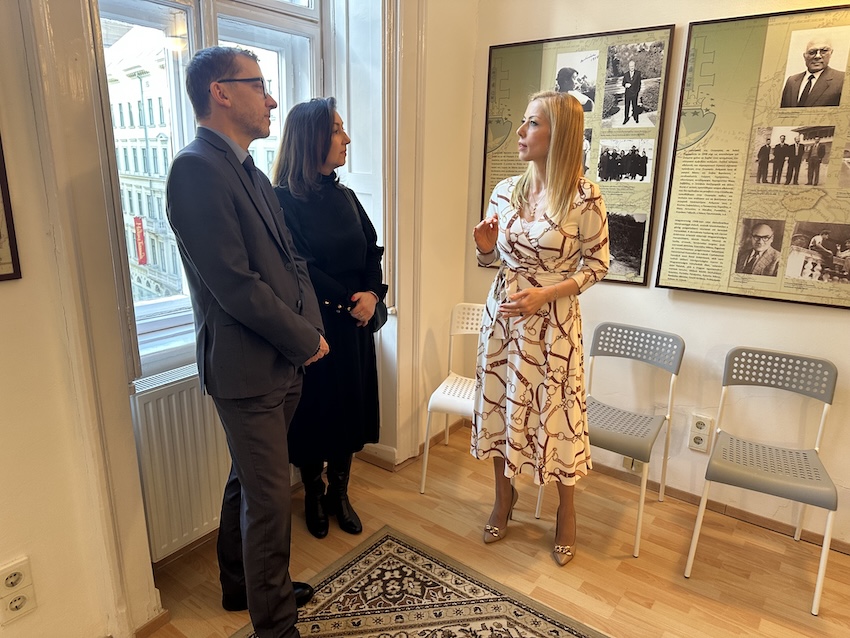

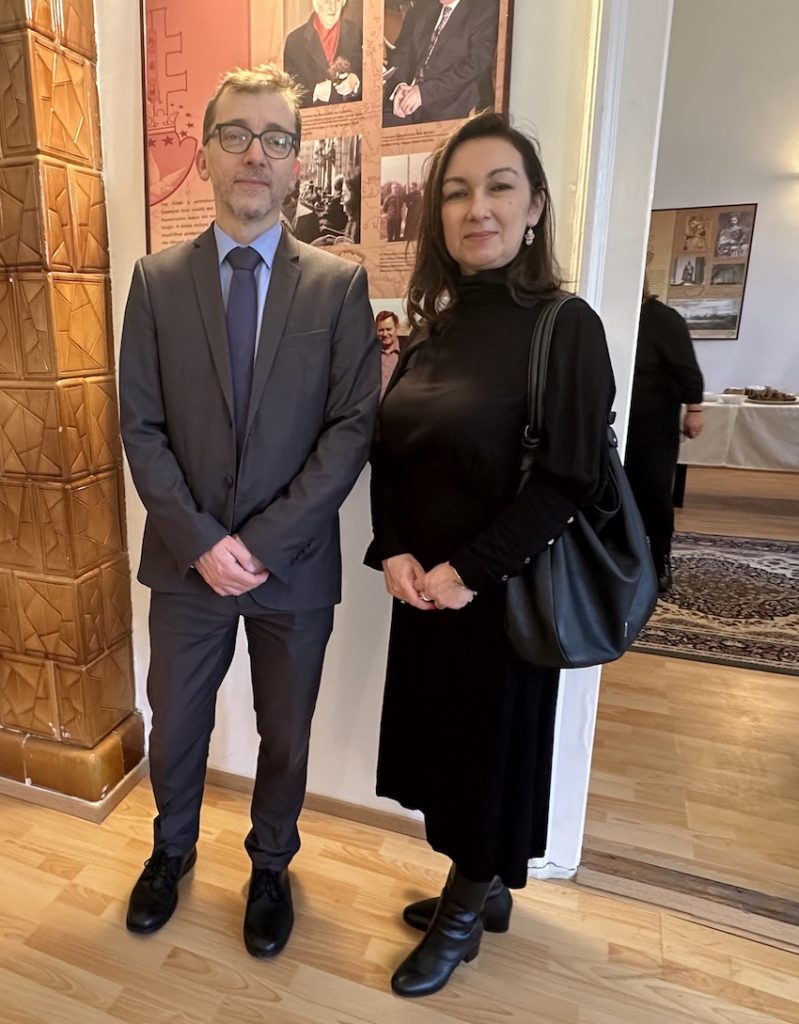

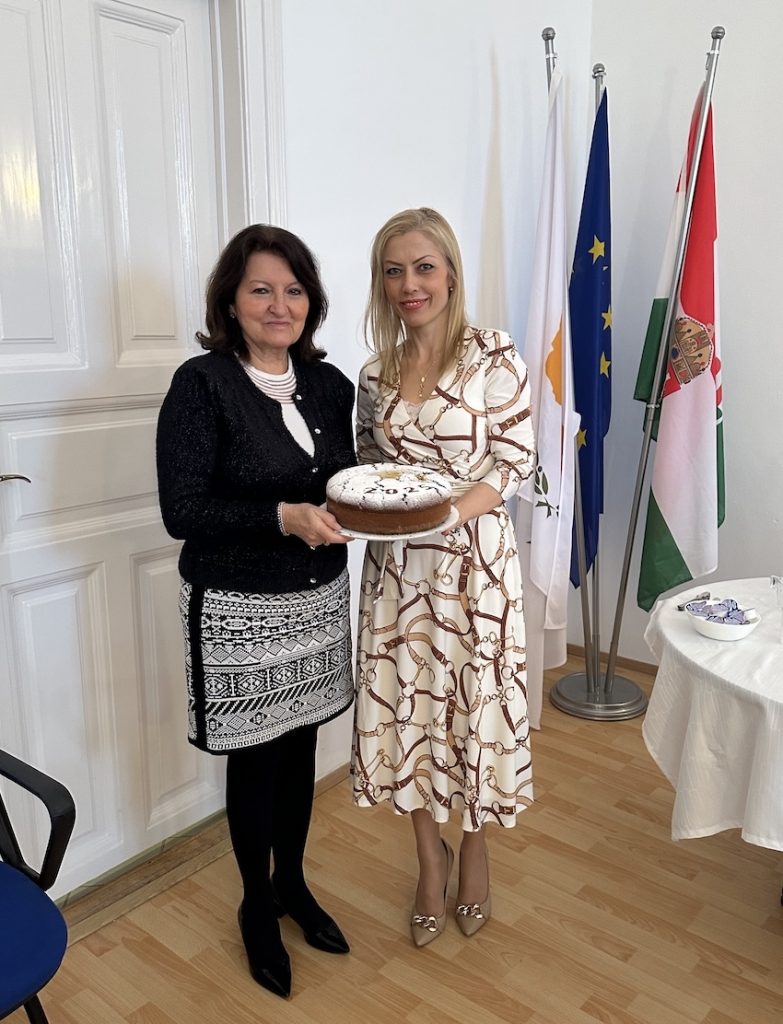

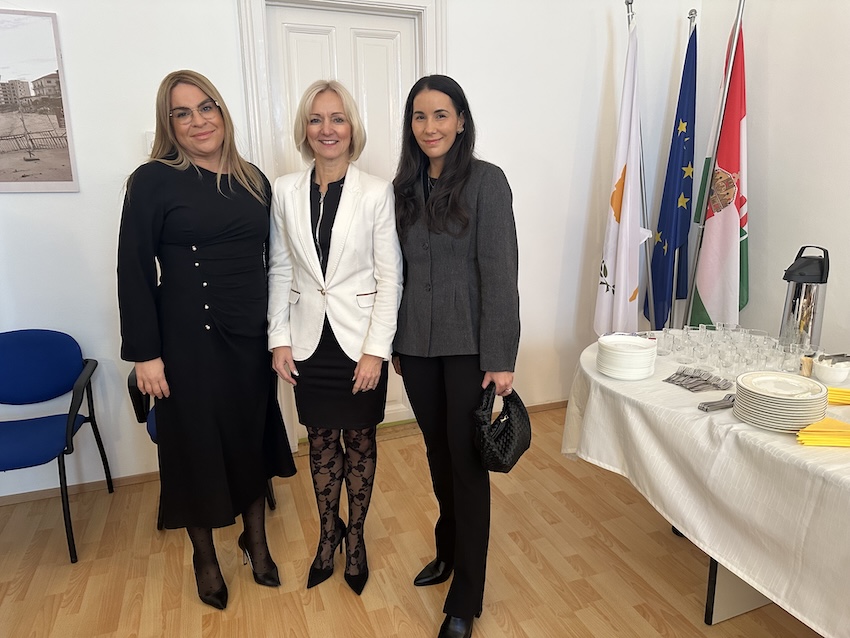

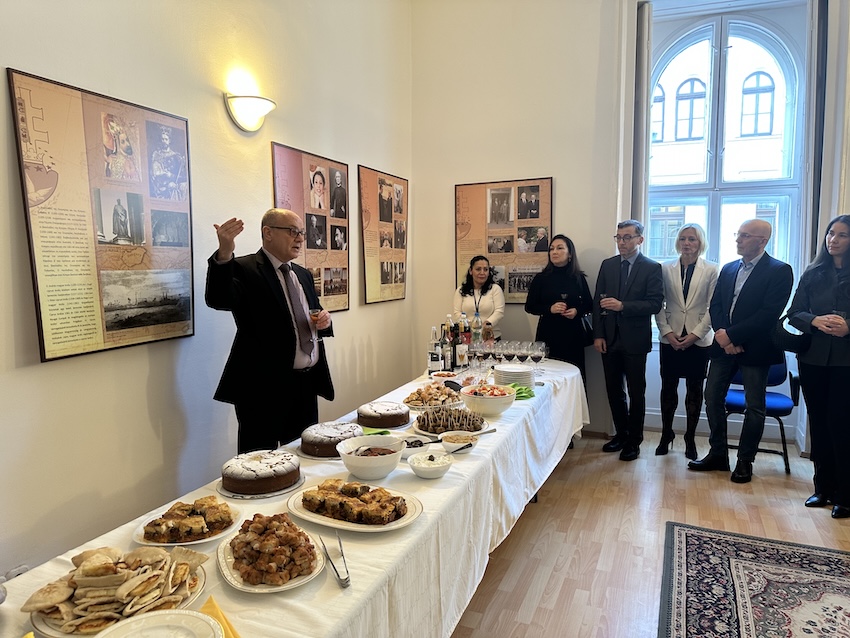
The ceremony commenced with an address by H.E. Omiros A. Mavrommatis, Ambassador of the Republic of Cyprus to Hungary, who warmly welcomed the participants. He emphasized the significance of the very special occasion dedicated to Vasilopita as a symbol of the Orthodox New Year. He underscored the shared values that unite different cultures, such as community, generosity and faith. His words set the tone for an event celebrating Cypriot and Greek heritage while fostering unity among the diverse guests.
The Ambassador also spoke about Saint Basil the Great, often considered the Orthodox Santa Claus, and highlighted the upcoming cultural centre being established at the ceremony venue. Currently, the site hosts a large exhibition of historical documents and photographs reflecting various stages of Cypriot–Hungarian bilateral relations. He also noted that the new cultural centre will play a pivotal role in promoting cultural exchange in Budapest in 2026, when Cyprus assumes the EU Council Presidency.


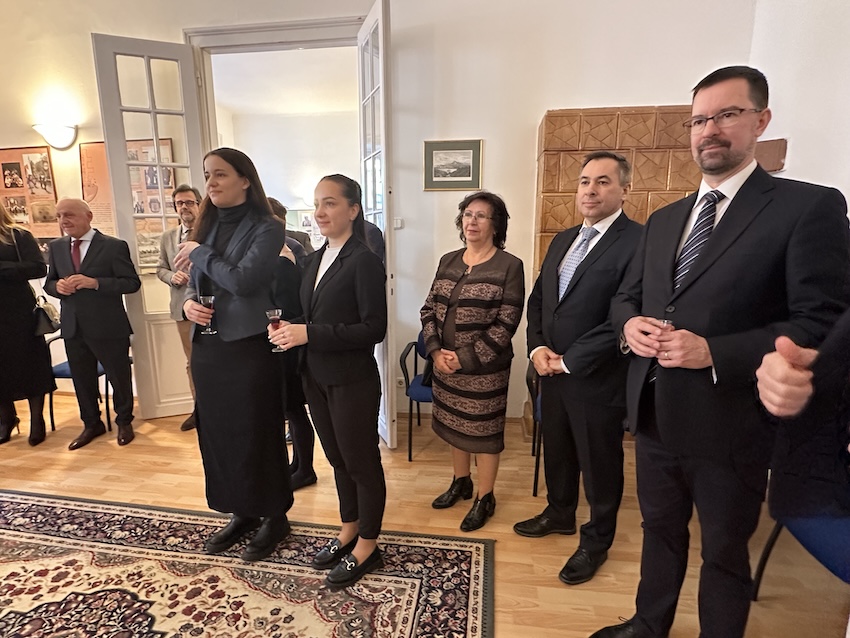
Following the Ambassador’s speech, the Orthodox priest invited by the Embassy conveyed New Year greetings from the Orthodox bishop and said a prayer blessing both the Vasilopita and the gathering. According to tradition, he ceremonially cut the cake baked by the ladies at the Embassy, with each slice symbolizing wishes for health, happiness and prosperity.

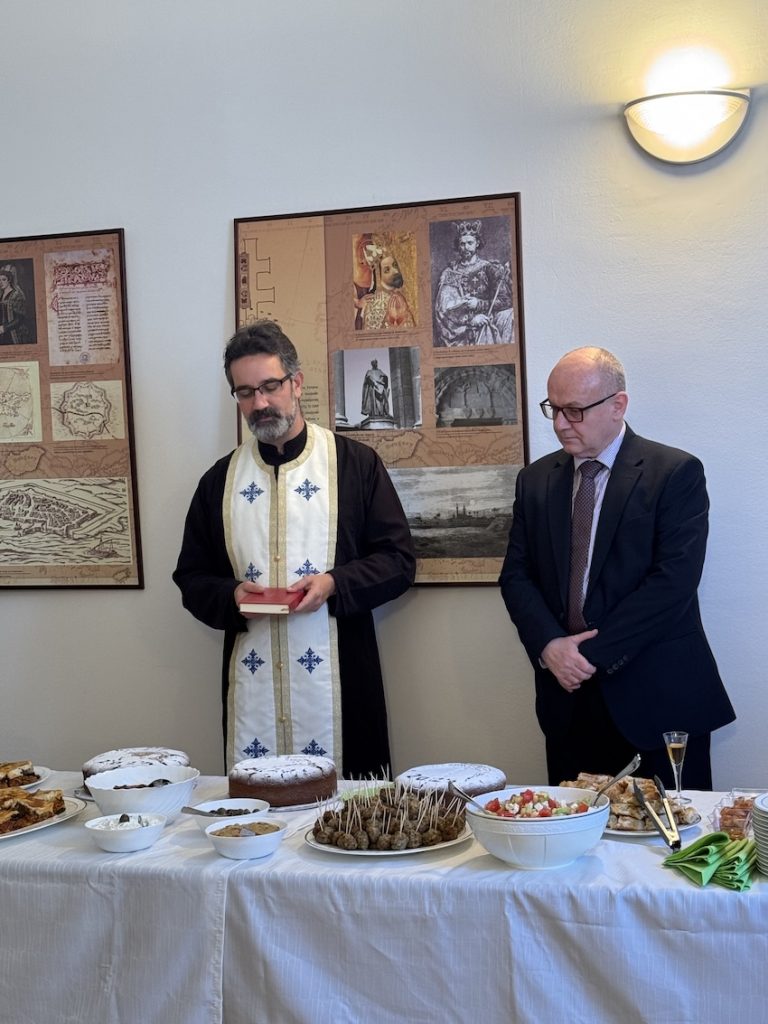
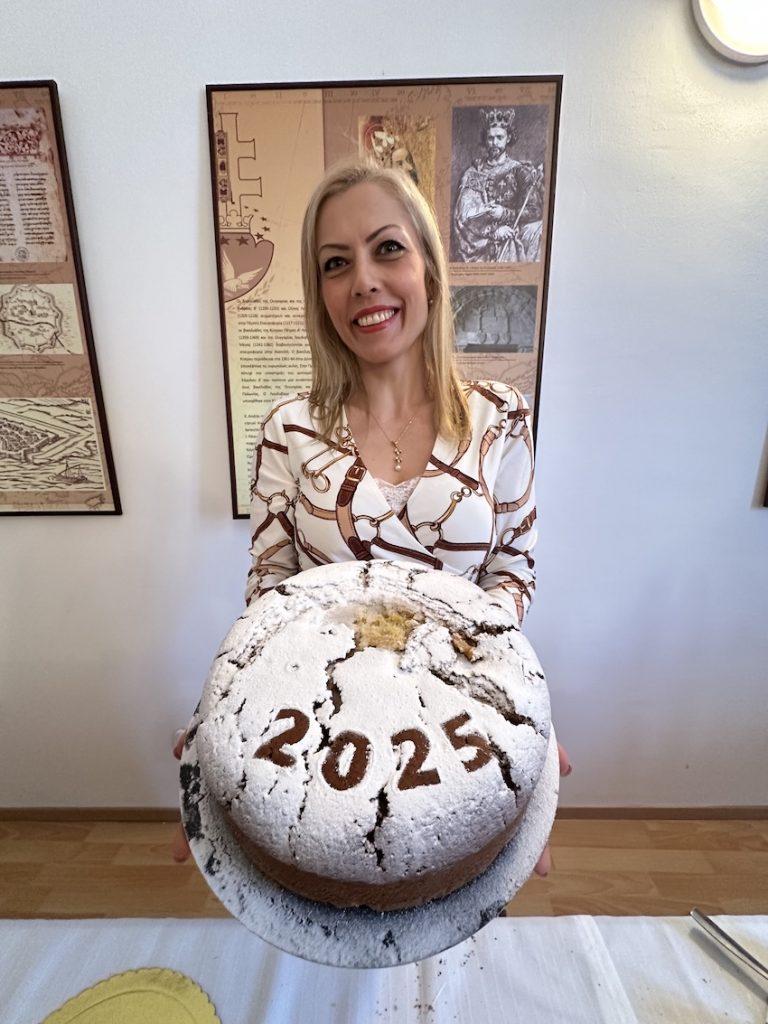
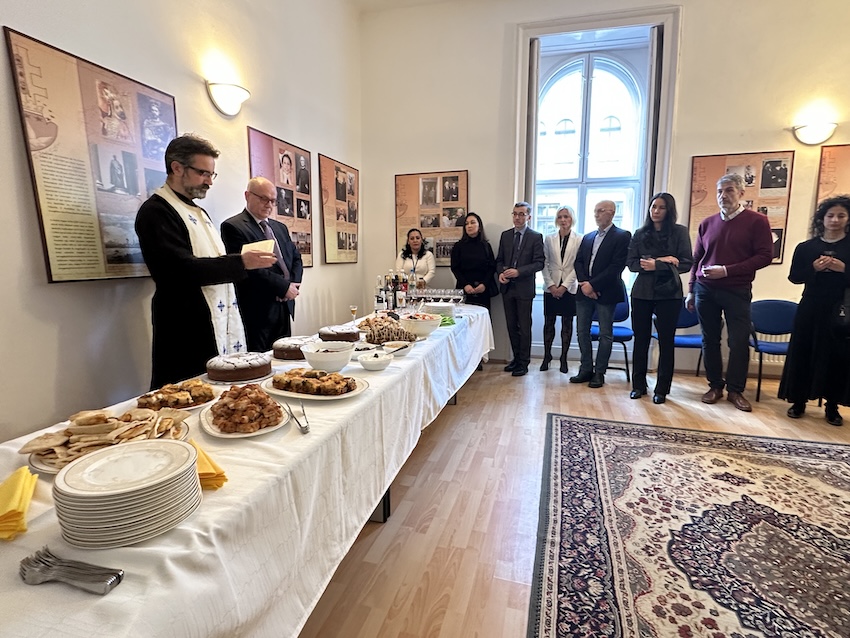
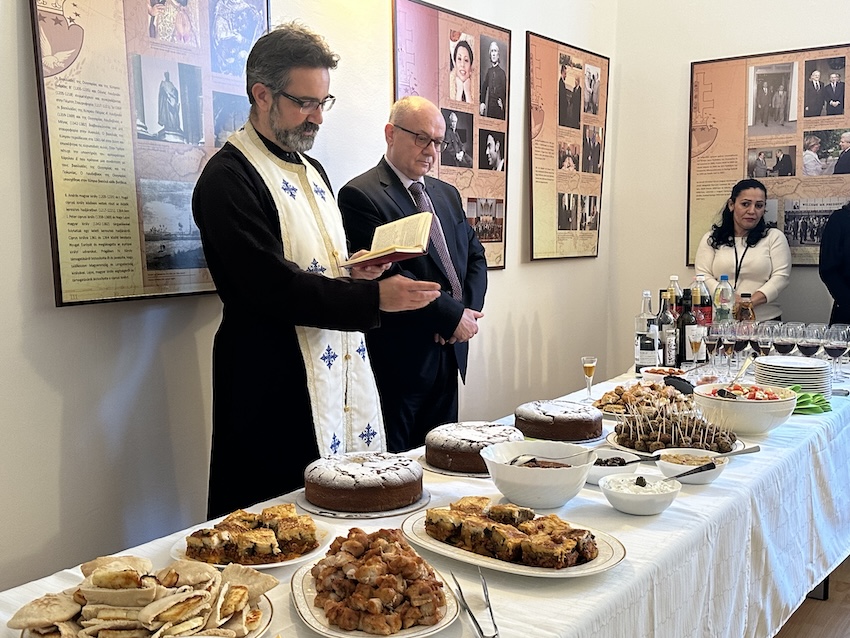
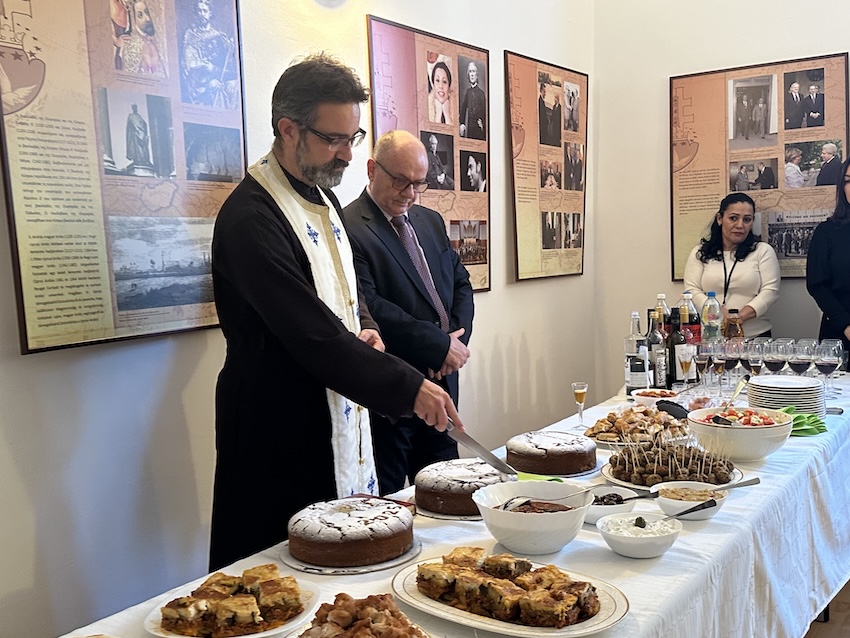
With the assistance of Mrs. Danka Mavrommatis, the cake was graciously distributed in a strict order: the first portions were dedicated to Christ, the Virgin Mary, and Saint Basil, while the remaining slices were shared with the guests as a token of good fortune.
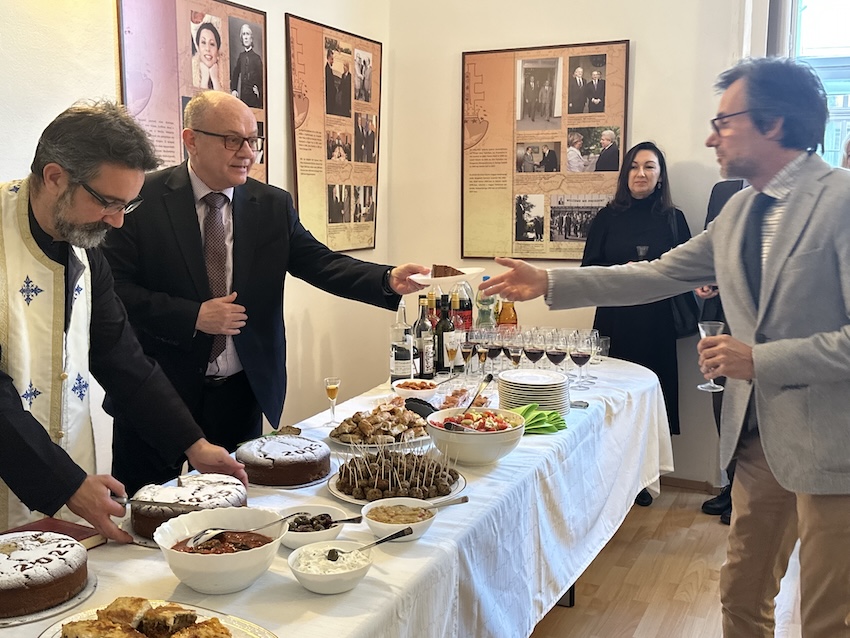
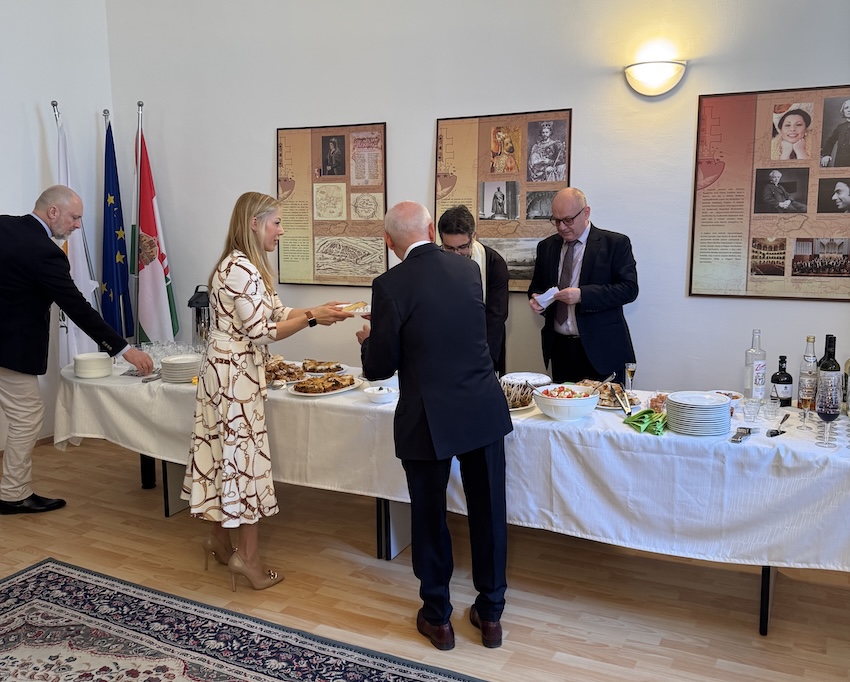
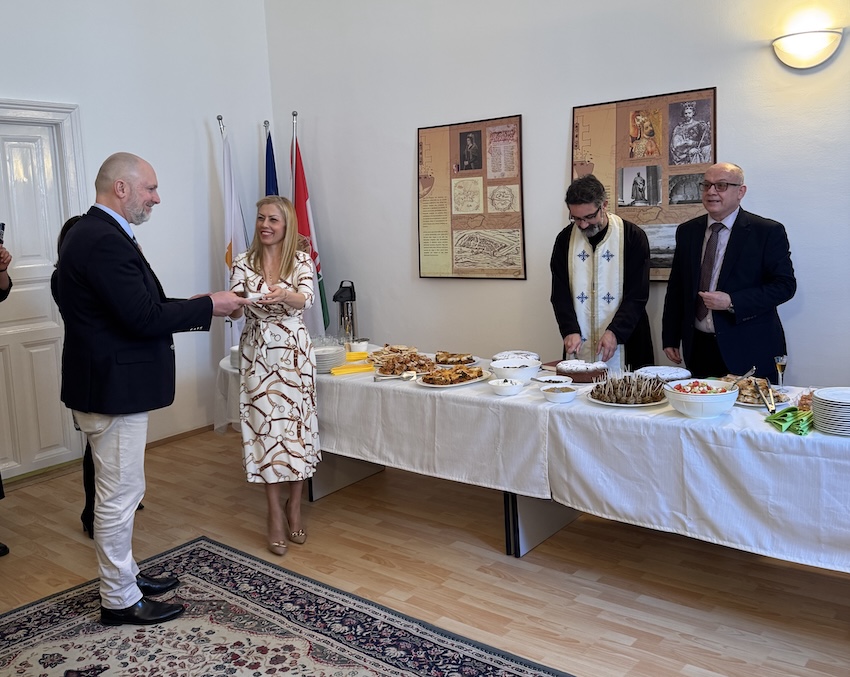

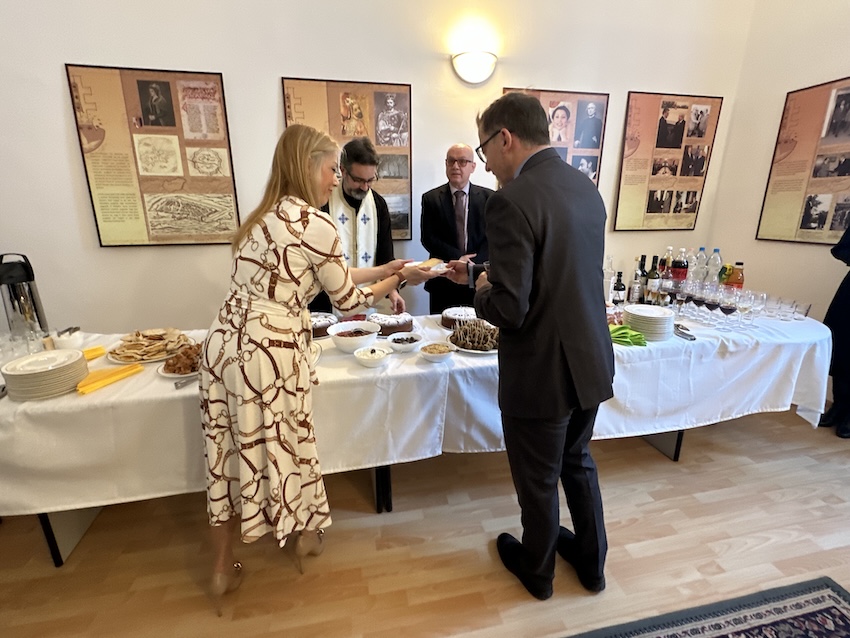
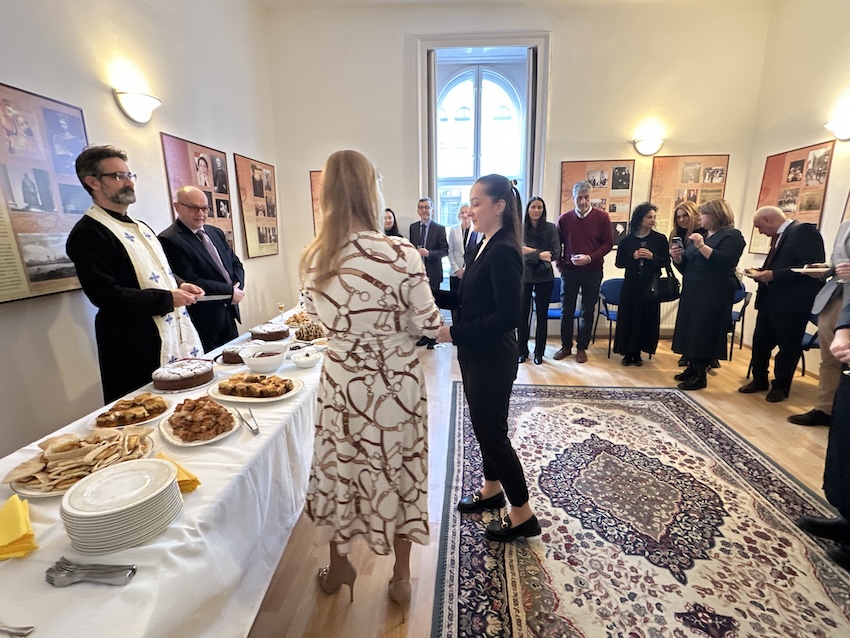
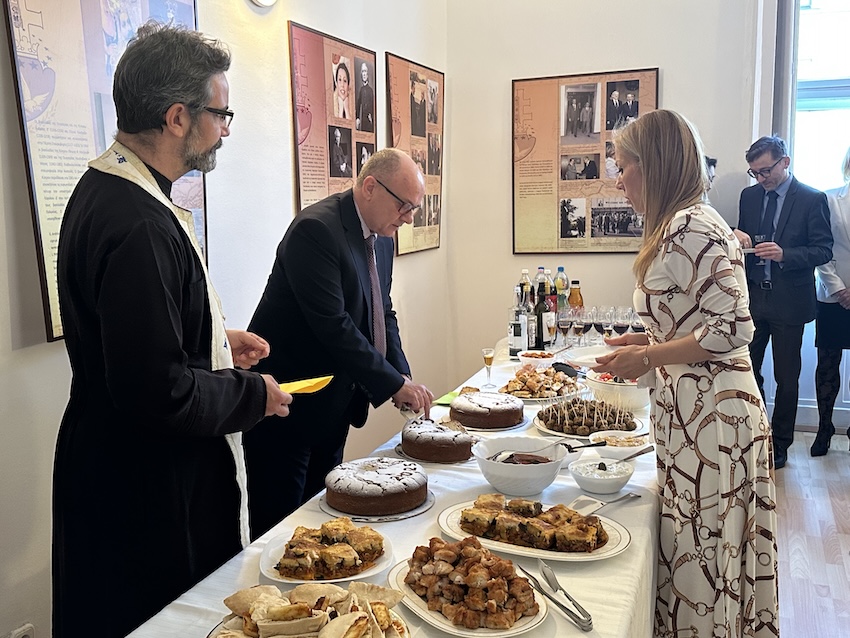
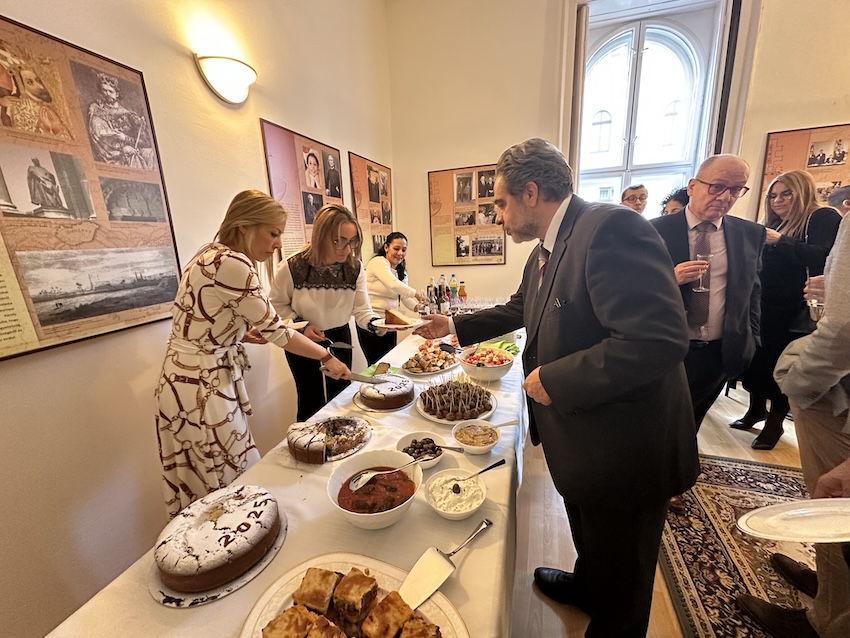
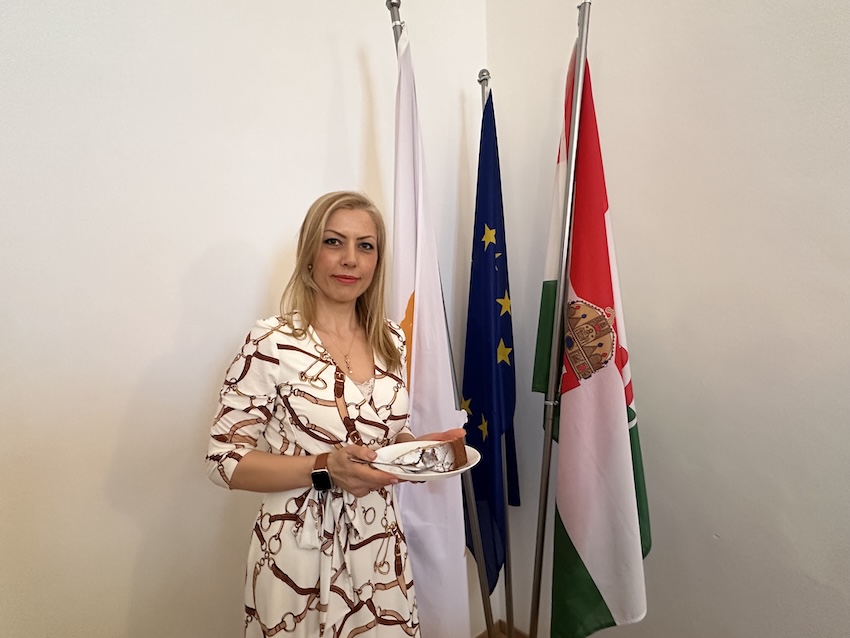
More than just a cultural ritual, the ceremony provided an opportunity for guests to exchange warm wishes for the year ahead. The festive atmosphere was enriched by a reception offering traditional Greek and Cypriot specialties renowned worldwide, accompanied by a selection of Cypriot and Hungarian wines, creating a friendly setting for conversation and networking.

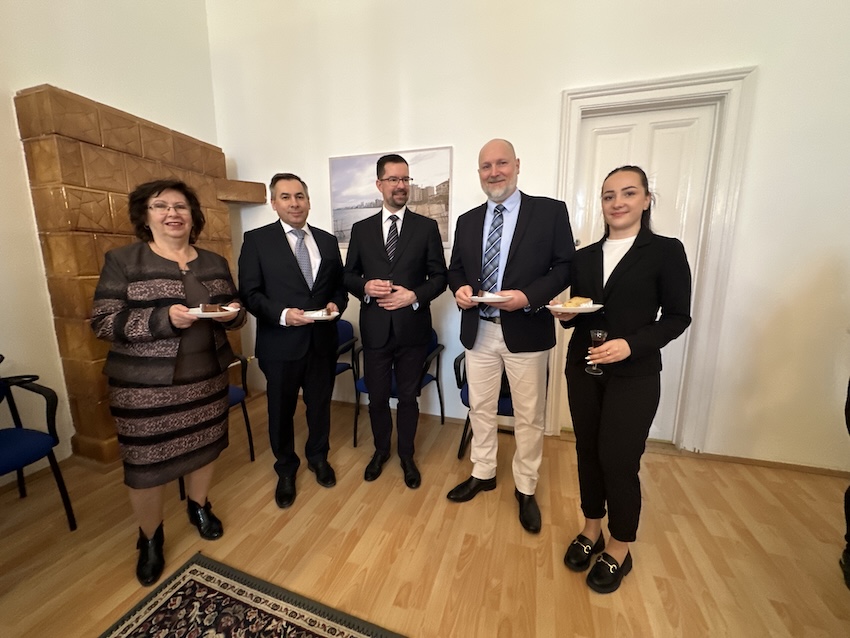
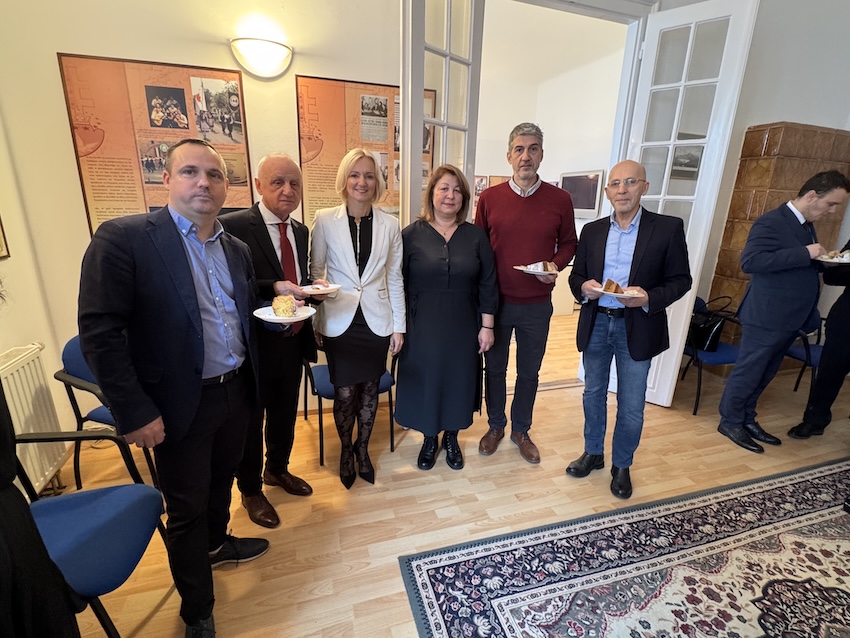


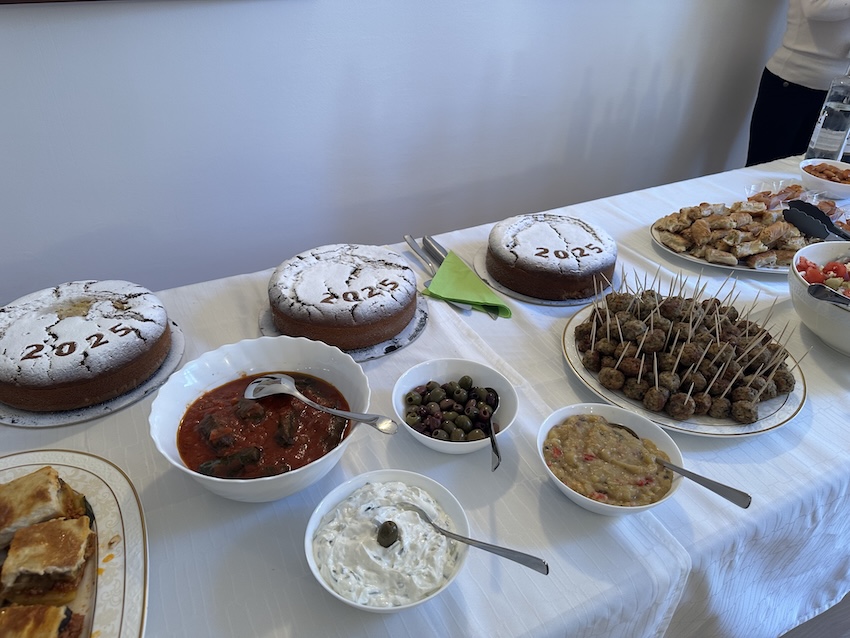
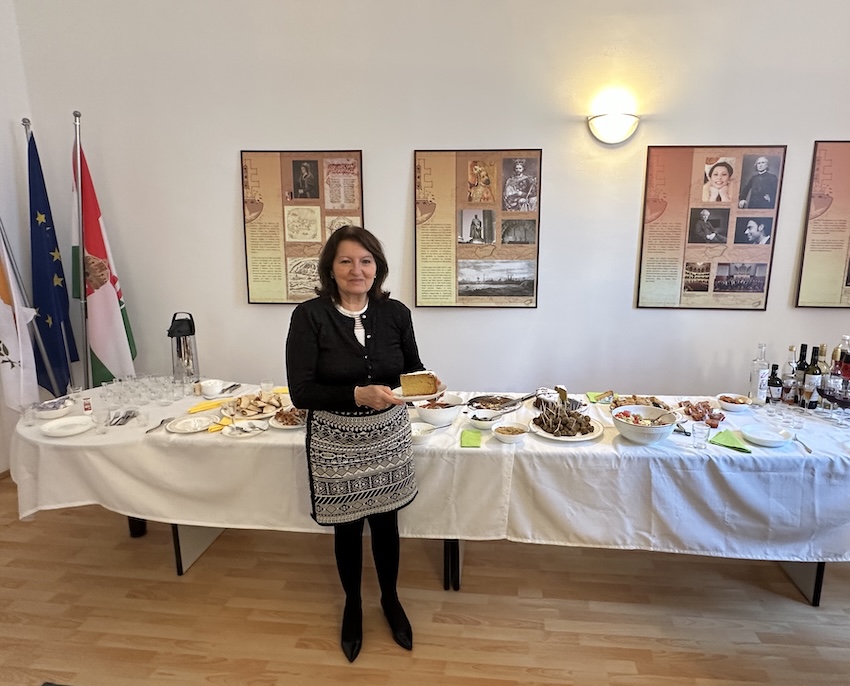

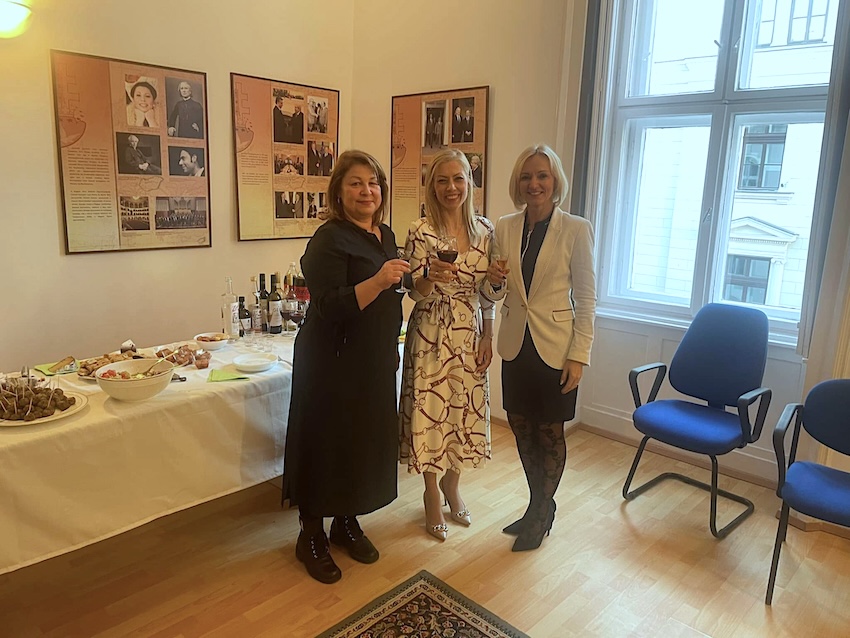

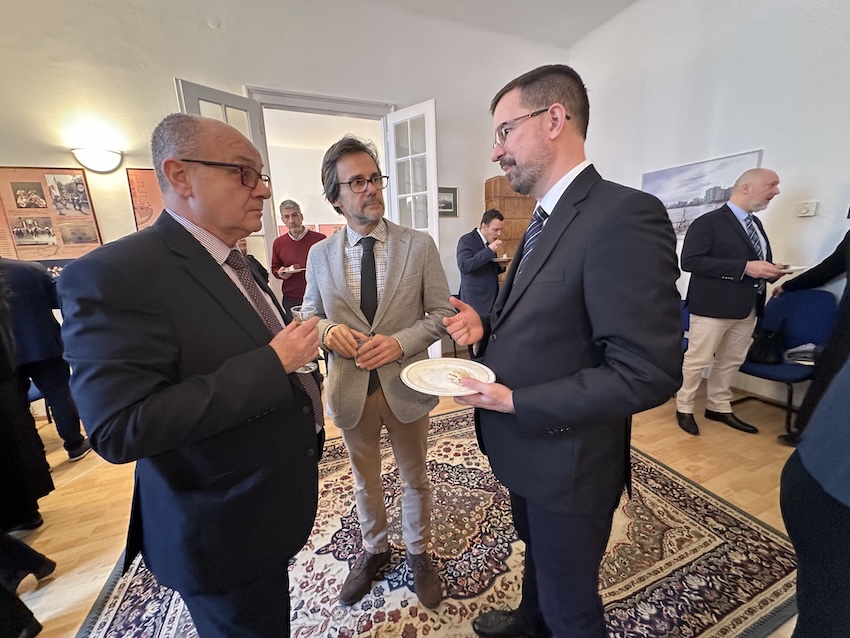
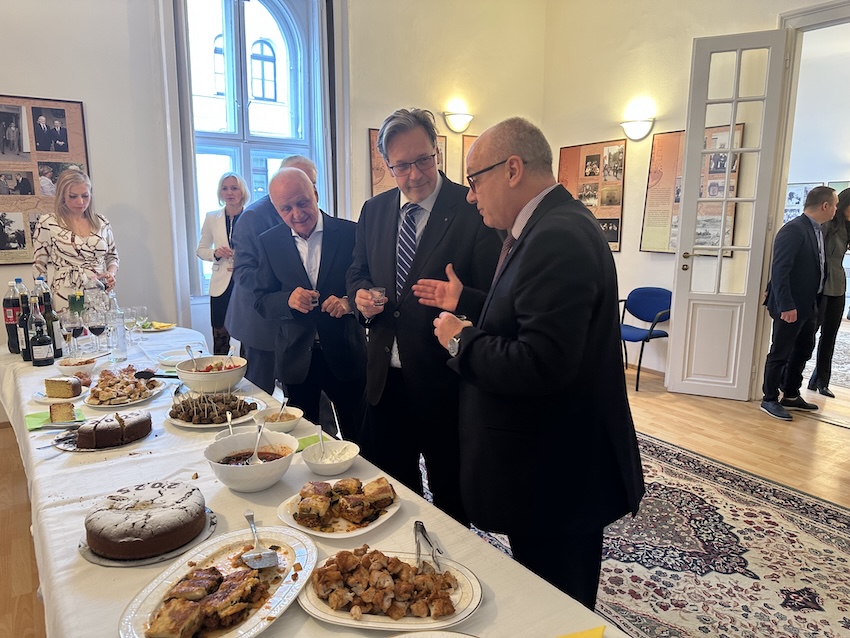
The Origin of Vasilopita
Vasilopita, or “Saint Basil’s Cake” is deeply rooted in the Greek Orthodox tradition. A defining feature of Vasilopita is the hidden coin, which is believed to bring blessings and good luck to the one who finds it. It is associated with Saint Basil the Great, a 4th-century bishop whose feast day is celebrated on the 1st January.
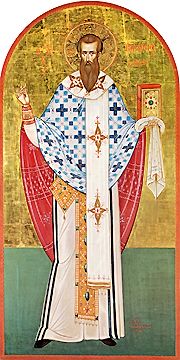
According to the history, during a time of severe famine, the emperor imposed an unbearably excessive tax on the people of Caesarea. Families, already living in poverty, were forced to surrender their last remaining coins and even their most cherished heirlooms to avoid debtors’ prison. Upon learning of this grave injustice, St. Basil the Great, Archbishop of Caesarea took his bishop’s staff and the Holy Gospels, courageously confronted the emperor and called him to repentance. By the grace of God, the emperor’s heart was moved – he not only rescinded the tax, but also ordered his tax collectors to return all the confiscated wealth to St. Basil for redistribution.
Faced with the daunting task of returning each coin and piece of jewellery to its rightful owner, however, St. Basil found a creative solution. According to legend, he instructed that the wealth be baked into loaves of bread and distributed among the people. Miraculously, each family received a loaf of bread with a coin or a piece of jewellery, thus returning to them what had been unjustly taken from them.
Over time, this custom evolved into the tradition of the Vasilopita, a special cake baked in honour of St. Basil, with a hidden coin symbolizing blessing, prosperity, and the enduring spirit of generosity that unites families and communities.
Saint Basil the Great: The Orthodox Santa Claus
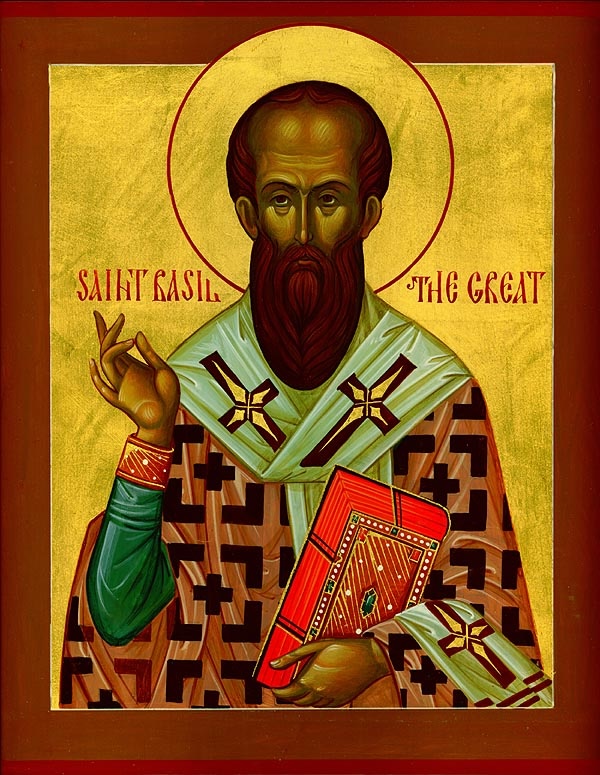
In Greek tradition, Άγιος Βασίλης (Agios Vasilis), or Saint Basil the Great, is considered the counterpart of Santa Claus. However, unlike the Western figure associated with Christmas Eve, Saint Basil’s legacy is rooted in his historical role as a benefactor to the poor.
A revered theologian and Bishop of Caesarea, he was known for his generosity and charitable works, which form the foundation of gift-giving traditions in Greek Orthodox Christmas celebrations.
Saint Basil’s feast day falls on 1 January, the date of his repose in the Lord in the year 379. This occasion marks the traditional time when Greek families exchange gifts, aligning with the belief that he visits homes on New Year’s Eve or New Year’s Day. Although he does not ride a sleigh or descend chimneys, his association with gift-giving arises from his acts of kindness rather than mythical elements.
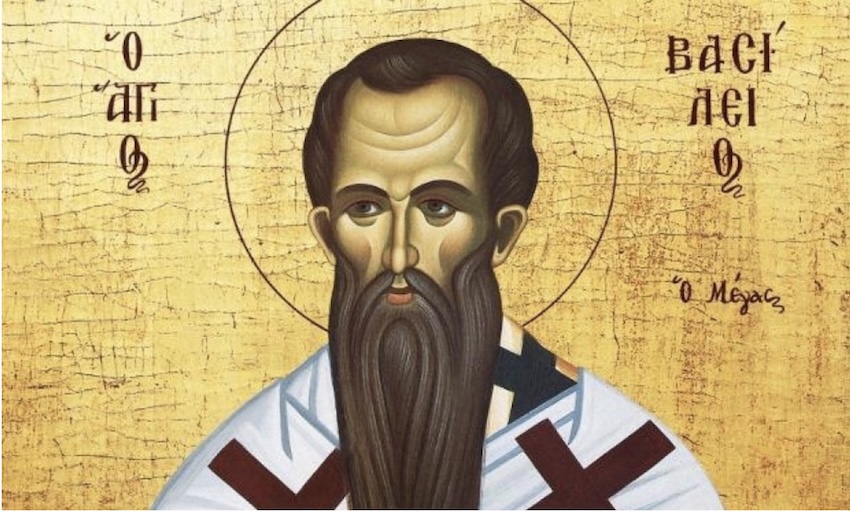
Celebrating Orthodox New Year with Tradition and Togetherness
The Vasilopita cutting ceremony at the Embassy of Cyprus was not only a tribute to tradition, but also an opportunity to reflect on shared hopes for a prosperous and joyful year ahead. The event brought together people from diverse backgrounds and faiths, united in the spirit of goodwill, showcasing the enduring power of tradition to foster connections and deepen friendships. It was a poignant reminder that people everywhere, regardless of their origins, aspire to good health, happiness and prosperity in the new year.
May this year bring success, joy and peace, filled with beautiful memories and unforgettable moments.
Happy Orthodox New Year 2025!
Photos from the exhibition of historical documents and photographs reflecting various stages of the Cypriot–Hungarian bilateral relations:

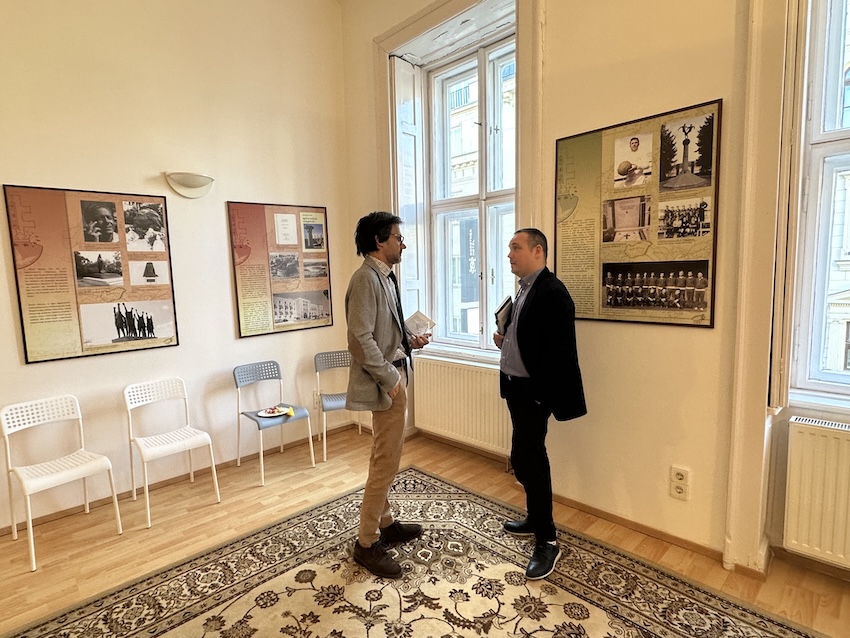
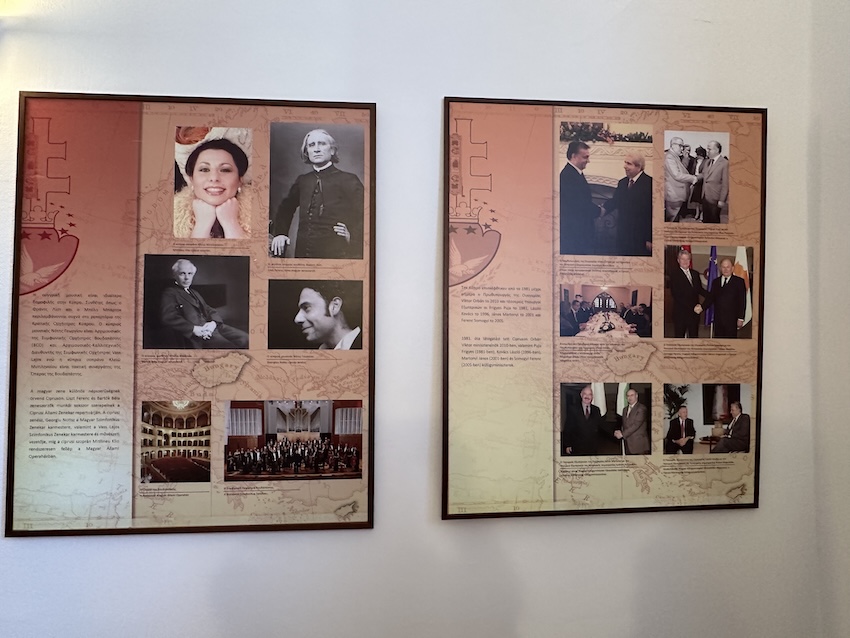

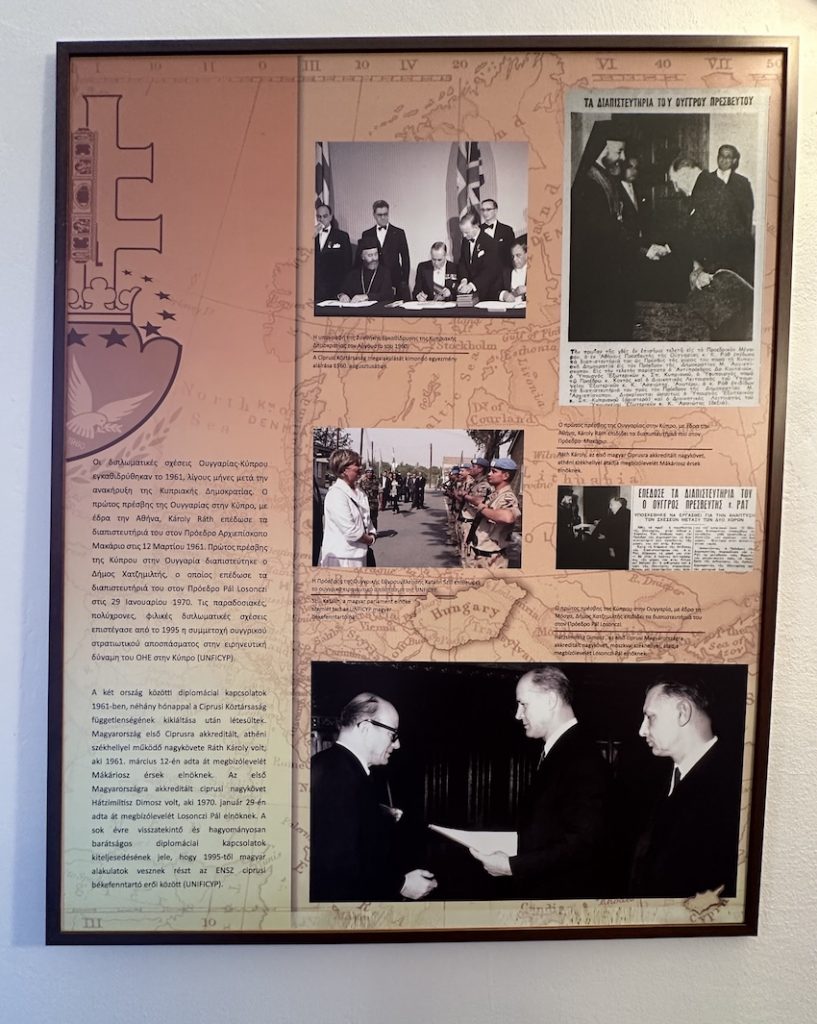
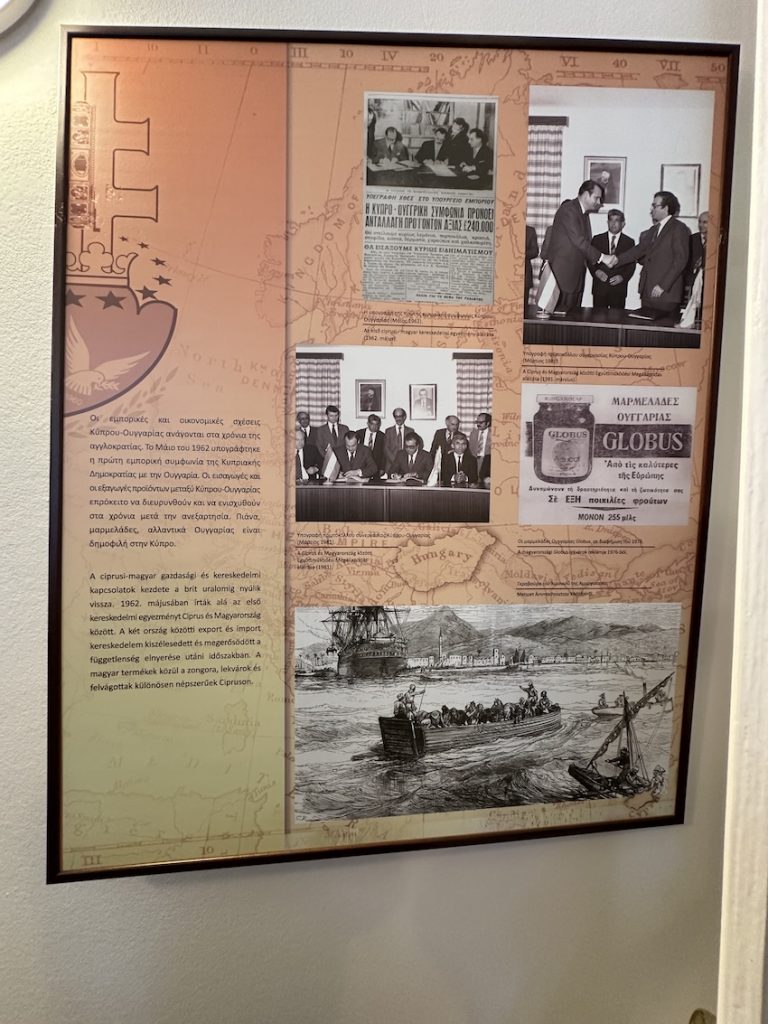






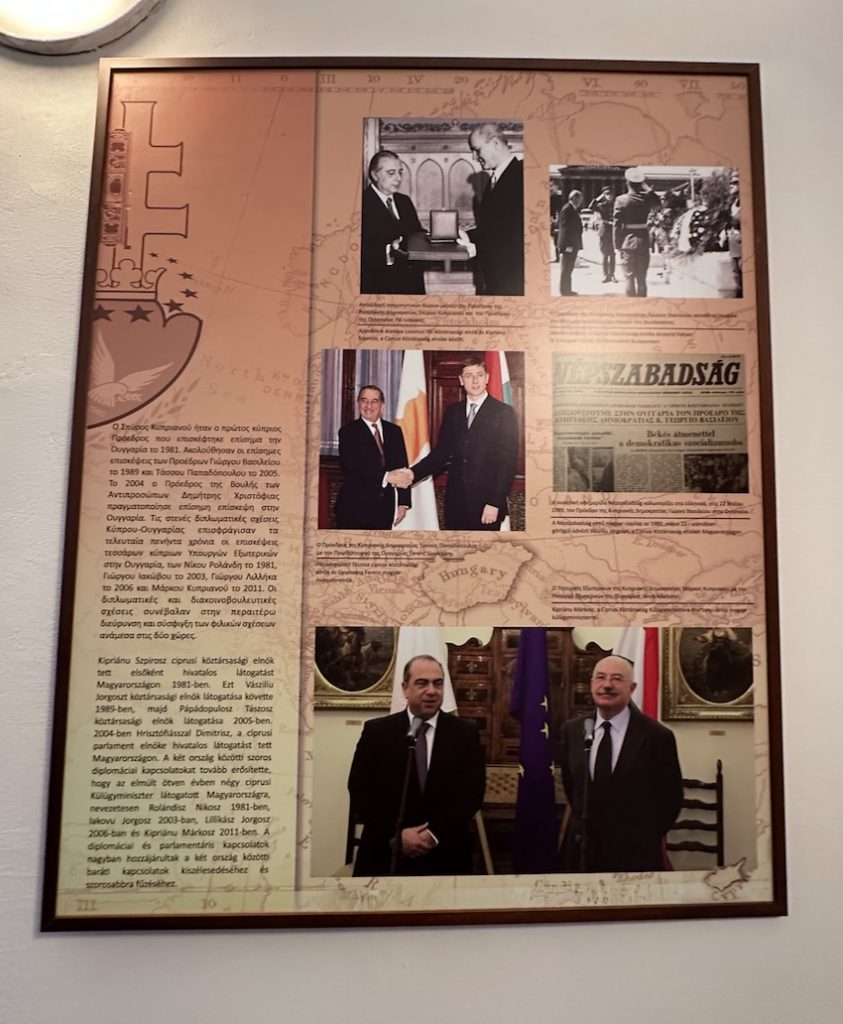
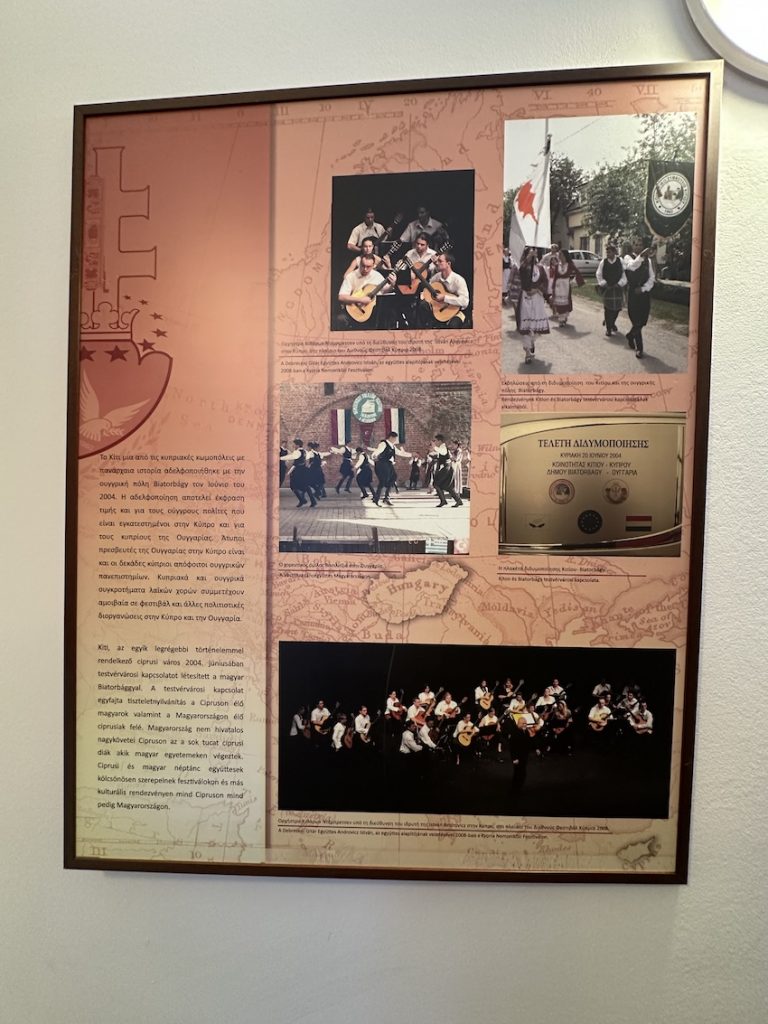
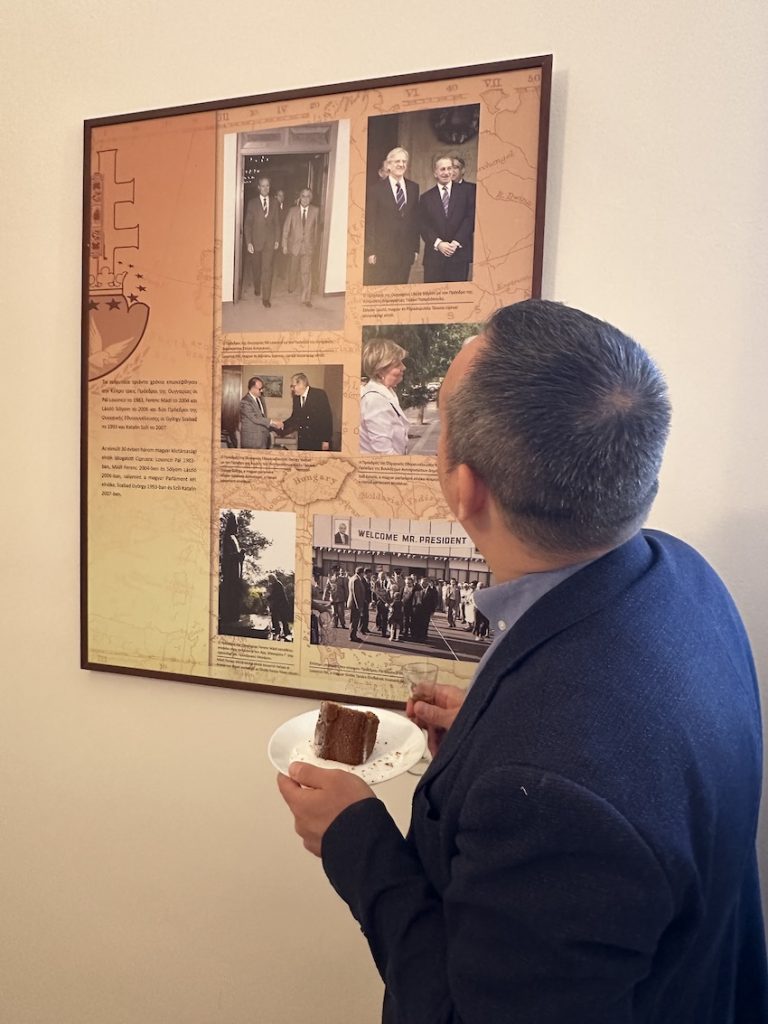
Source: Embassy of the Republic of Cyprus in Budapest
Photos by Emili Kovács and DPA





